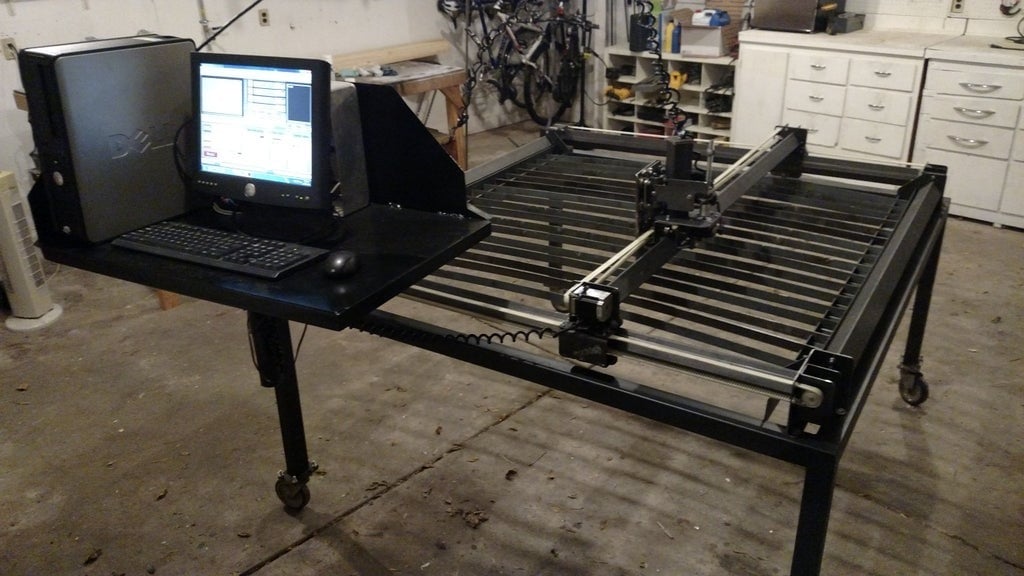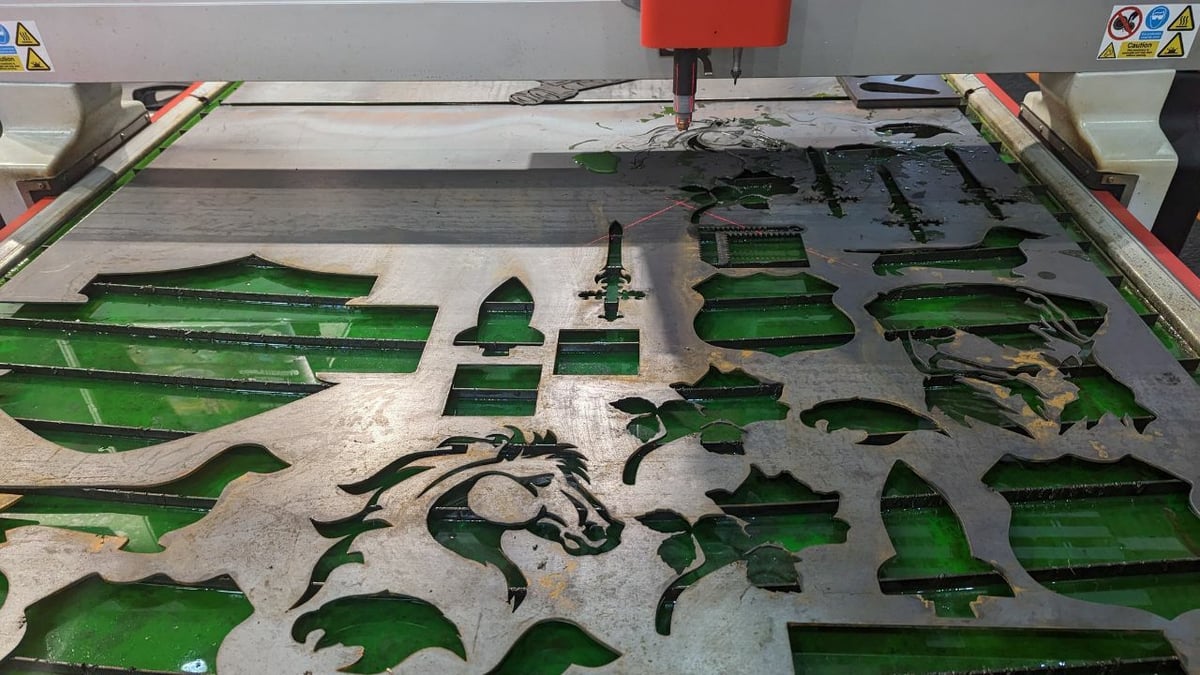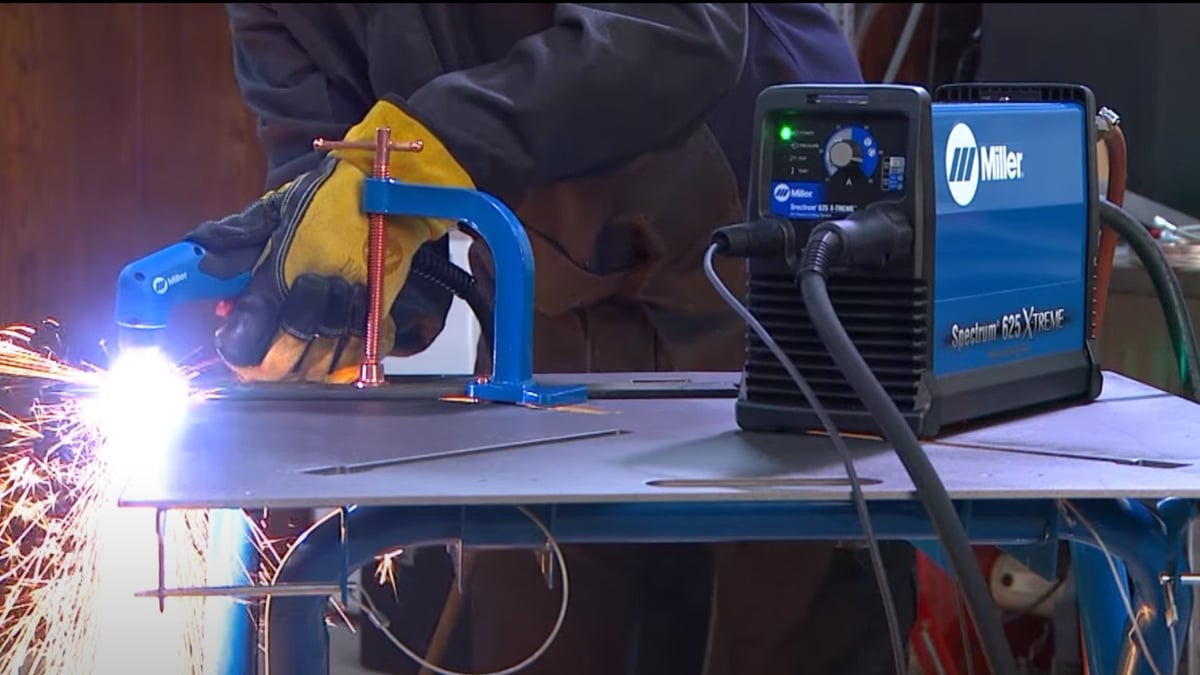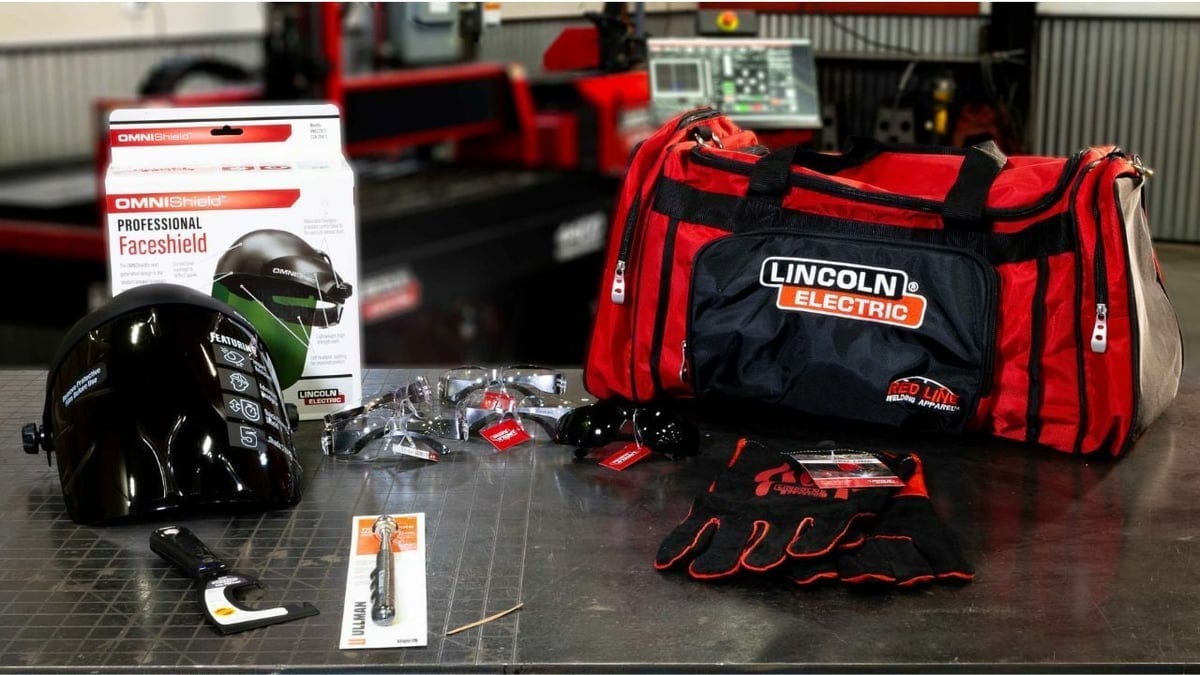There are several technologies that can be used to cut sheet metal, including CNC milling, laser cutting, and CNC plasma cutting. Where CNC milling machines use a tool end for cutting, plasma cutters use a high-temperature plasma torch to blast through the metal. The process appears comparable to laser cutting, as they’re both non-contact. However, plasma operates at much hotter temperatures and therefore can cut through thicker materials.
Similar to the way FDM 3D printers interpret printing instructions in G-code, CNC plasma cutters use G-code as instructions for cutting. And when we say cutting, we mean it. The plasma is too strong to carve a nice design in the metal; that job should be saved for the CNC mill. Plasma cutting is primarily used to cut large gauge sheet metal for welding purposes.
Plasma cutting is a good option for those who often have metal cutting needs because it’s relatively easy to operate once you have it set up. The limiting factor is often the required workshop space needed for both safety and the equipment.
So if you have the need for some heavier-duty metal cutting, read on to find out how plasma cutting works and what you’ll need to get cutting in your own workshop. First, let’s take a look at how the process actually works.
How It Works
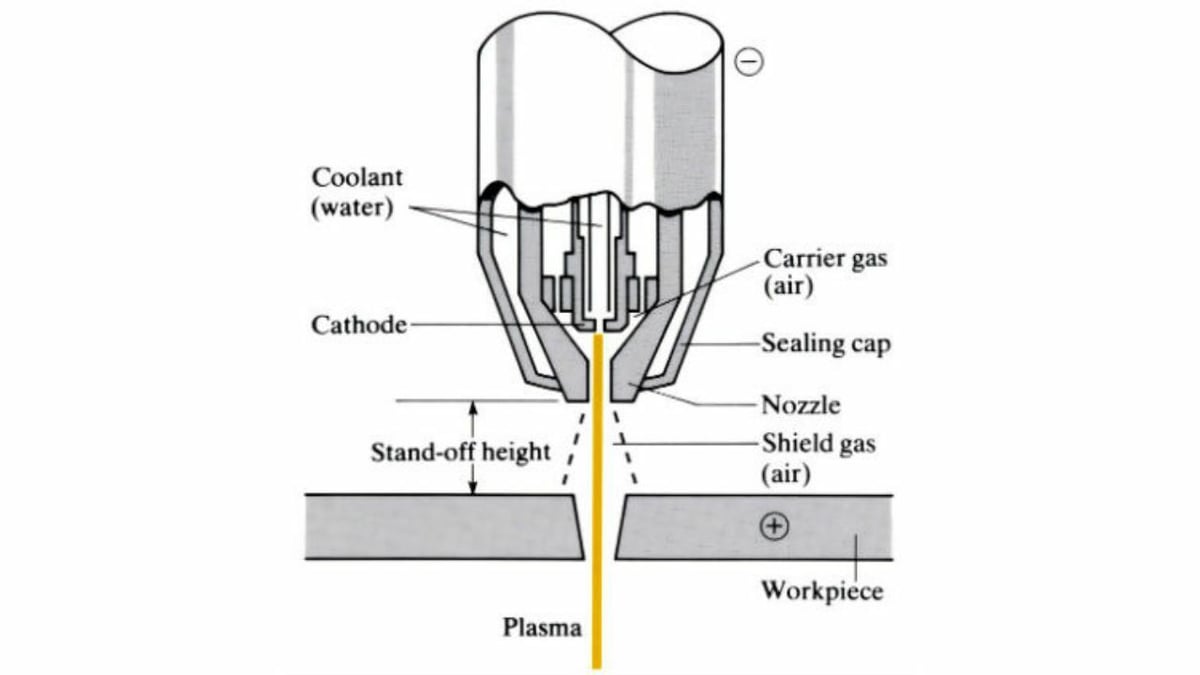
The impressive cutting power of plasma cutters comes from their ability to harness and direct the fourth state of matter, plasma. Barring the surface of the sun or lightning strikes, one doesn’t often stumble upon plasma in the day-to-day. That’s because it’s a very high energy, forming when a gas is heated so much that it becomes electrically conductive.
The operation principle of a plasma cutter is actually pretty straightforward. Pressurized gas gets forced through a copper nozzle. The nozzle is part of a carefully designed electrical circuit that can carry the high current required for ionization. As the gas exits the nozzle, it must pass through an arc of electricity. The arc is so powerful that it ionizes the gas and transforms it into plasma.
Air pressure from the nozzle forces the plasma downwards to the surface of the sheet. Plasma melts through the metal, pushing the molten material out of its way. This means that a cut from a plasma machine won’t be as clean as one from milling or laser cutting.
Machine Considerations
CNC plasma cutters can vary greatly in size, price, and functionality. There are vast machines that cut huge industrial components, but also 4-foot by 4-foot machines that can fit into almost any workshop. As a whole, the machines are generally accurate but not as precise as a milling machine. Their strong point is speed; cutting through metals at speeds of up to 500 inches per minute is possible with plasma cutting.
Of course, those specs are reflective of commercial devices. There are instructions available online for building a DIY CNC plasma cutter, such as the one posted by simonrafferty on Instructables. Keep in mind, though, that the ability of your cutter will depend on the amount of power it can generate.
The amperage of the arc largely determines how thick the sheet metal can be, along with the compressor force. A larger amperage will allow for a more powerful plasma arc to be created, which means you can cut a thicker piece of metal.
The type of metal that can be cut depends on the type of gas used to create the plasma. So next, let’s take a look at the options and what they’re capable of!
Materials & Gases
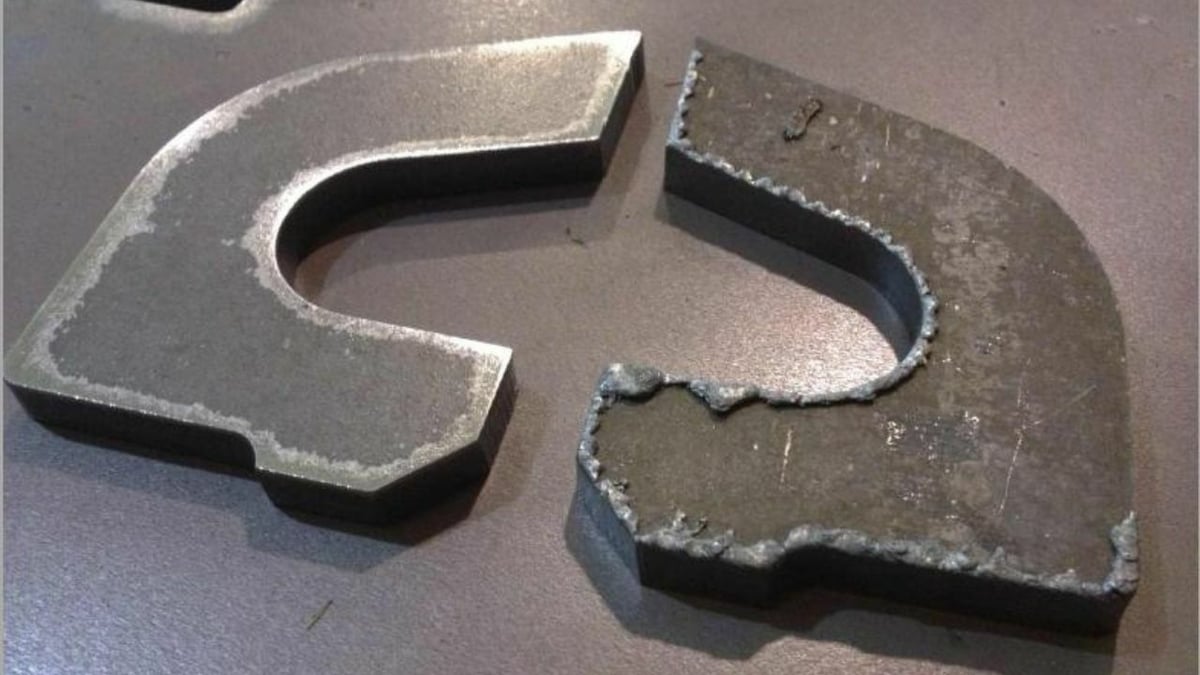
It’s important to note that the sheet metal becomes part of the electrical circuit created to generate plasma, so only conductive metals can be cut.
The type of material and how thick it can be depends on the gas employed. The gas can also influence the quality of the cut. There’s a variety of different gases and gas mixtures out there, so we’ll highlight the main ones:
- Compressed air is most commonly used for smaller-scale machines and can give a decent cut on steel, stainless steel, or aluminum up to 1 inch thick.
- Oxygen is used for fast, high-quality cuts of mild steel up to 1.25 inches thick. It produces a rougher-looking cut on stainless steel and aluminum.
- Argon and hydrogen mix is preferred for clean cuts in stainless steel and aluminum up to 3 inches thick, as it produces the hottest plasma arc.
- Nitrogen works well with high-current devices to deliver nice cuts to steels and aluminum up to 3 inches thick.
Today, you don’t need a fancy plasma cutter to produce a cut that will suffice for most welding jobs (i.e. two pieces of metal need to sit flush together with little to no gaps in between). However, it’s common to have some burring along the cut line and more so the thicker the material is. The image above shows burring on a very thick piece that would need to be removed before welding.
Now that we’ve covered all the basics of the plasma cutting machine and what it can cut, let’s consider the workspace needed to make it happen.
Work Area
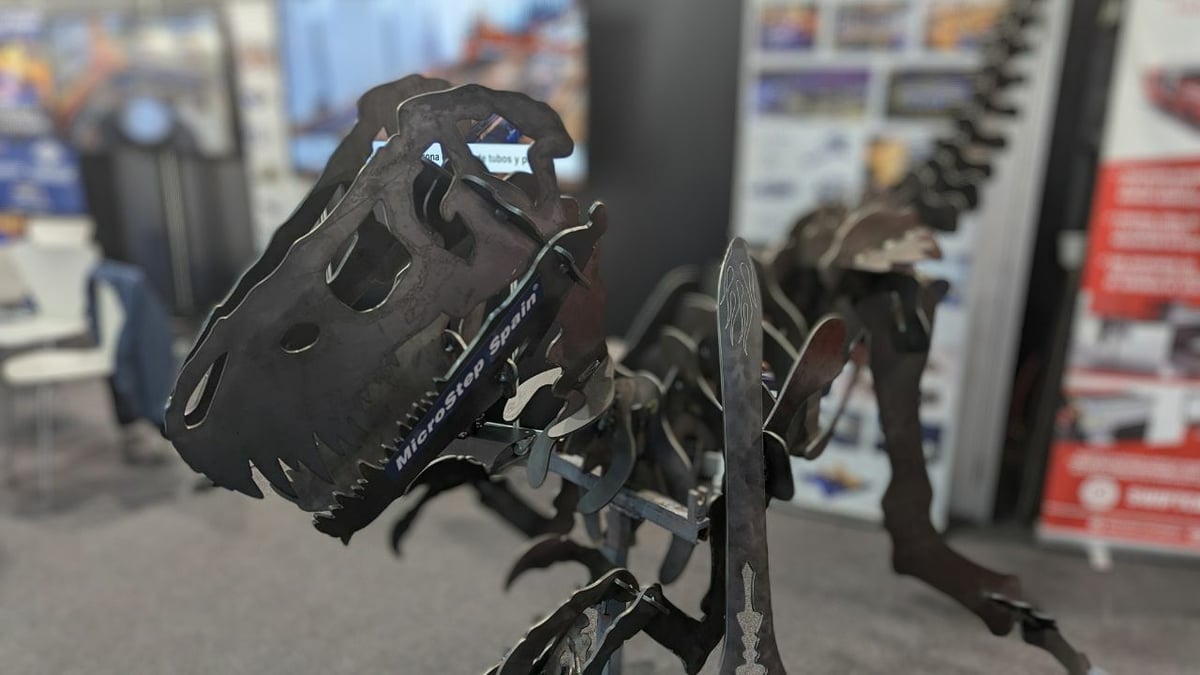
When it comes to the machines themselves, the most important considerations are space and safety. Unlike many hobby CNC systems, a plasma cutter needs a large, well-ventilated area for safe operation. It’s not a machine you can tuck into a corner like a 3D printer.
The machine needs clearance from any walls or structures all the way around its perimeter due to the chance of stray sparks. This area should be sufficient to allow you to easily walk all the way around the machine. Likewise, the floor should be concrete or another flame-resistant material.
You’ll also need room for a gas cylinder or compressor, and it can be worthwhile dedicating a laptop for operating the machine. If you’re using a compressed cylinder, be sure to follow the safe storage guidelines from the producer.
As these devices require lots of power to operate, it’s important to check your workshop’s power source before investing. Many machines will require a 16-A or 32-A socket to power the cutter, and you may need another high-current socket for the compressor. Avoid the use of an extension cord, even if it’s rated for the current you’re machine needs, because of the nature of the electricity usage of the plasma cutter.
Tables
It may not be difficult to imagine that the plasma cutting process usually requires a dedicated platform on which the cutting is performed. During the cutting process, molten metal is blown through the sheet and a lot of smoke is generated, so a cutting table is used to safely deal with that. There are two main types of plasma tables: downdraft and water.
Downdraft tables have built-in ventilation, designed to pull fumes and debris away from the metal being worked on. Most often, the working surface contains holes through which particulates are sucked away with a vacuum. In this case, one should attach a turbine-style exhaust system to the outlet. This type of table is less common in small workshops.
A water table suspends the working piece of metal above a pool of water that catches the fumes and debris. This type of table is the simplest table to install. You do have to maintain the water and clean the bath occasionally to prevent mold.
Tables come in all different sizes to suit a variety of needs. Industrial devices can be more than 20 feet long, but if you’re looking to just get started with the process, you’ll likely want to get a 4- or 8-foot table in your shop. Four feet is usually the smallest table you’ll find, as that’s half the size of a standard cut of mild steel. It’s worth checking beforehand that you can get stock material that suits the size of table you’re planning to buy.
Handheld Cutters
If you don’t have room for a table but you still want to get into cutting some mild steel, you should consider a handheld plasma cutter. A handheld cutter is exactly the same except there’s no computer control and no plasma table. It can be about the same size as a small MIG welder. That means you’ll gain tons of flexibility in the use of your cutter but lose the precision that comes with CNC operation.
Handheld cutters are often used by welders to remove rusted sections of metal before a new piece is welded. To cut materials with this device, it’s advised to still have some kind of metal table for support and grounding the electrical current.
Safety
Given the extremely high temperatures that a plasma arc operates at, there’s high potential for molten metal splatter, high electrical currents, and bright lights given off by the plasma. Therefore, safety is of utmost importance when working with these devices.
As we mentioned, you’ll need to leave some area around the machine that’s fire safe, and a concrete floor is strongly advised. In terms of personal protective equipment, you’ll also need the following:
- Eye protection: Try to find a plasma-safe face shield that allows you to safely look at the arc in operation.
- Hand protection: You’re going to want to get heavy-duty gloves
for handling the metal. - Body protection: A welding gown should be worn if you’re standing near the table during cutting.
- A welding curtain: If there are going to be other people in the workspace, putting up a welding curtain will protect their eyes from the bright lights.
Software
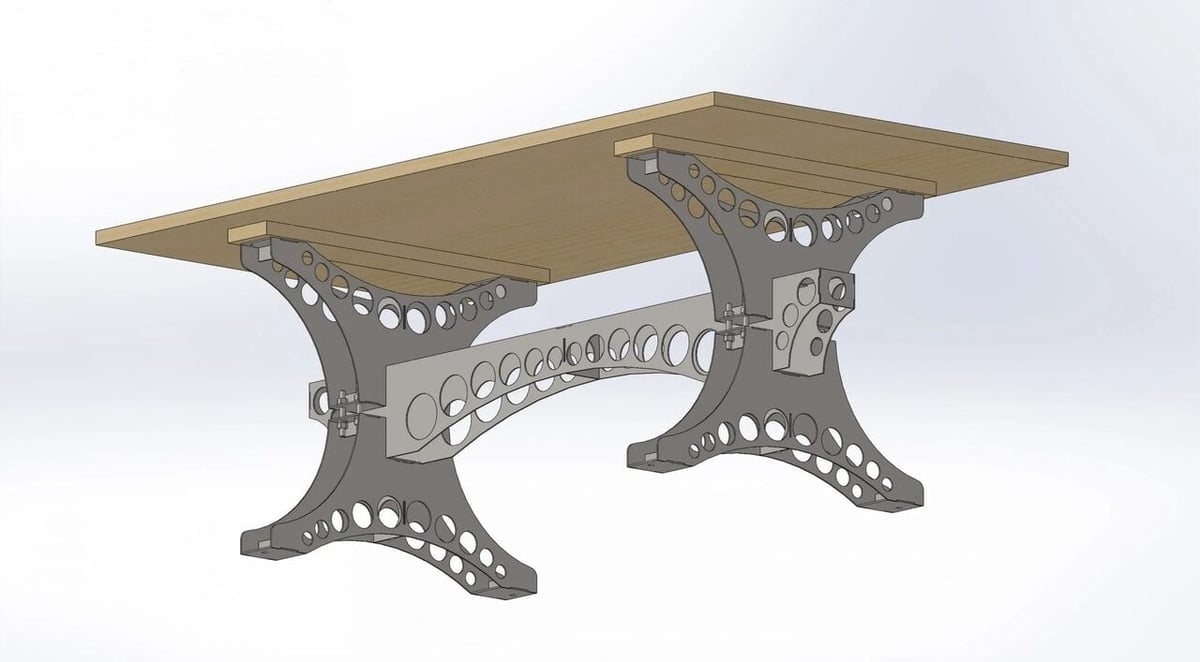
As with many CNC-type machines, including 3D printing, there are two main types of software that you’ll need to cut a custom design. The first is a design program that can generate DXF files. The file can then be imported into the machine operation software to generate cutting instructions, akin to slicing software.
DXF image files can be created with several common programs like Fusion 360, Solidworks, or Inkscape. Most CAD packages can also generate DXF files.
There can be a bit of a learning curve in setting up the files for cutting. For example, you’ll often want to cut the outer perimeter of the piece in the opposite direction to the inner cuts to prevent the part from suffering thermal warping. To get started, you may want to check out some helpful guides on YouTube, such as the one from Make it Kustom.
Almost every brand-name machine will come with the specialized software required to turn a DXF image into a cutting file. Some software can even create cutting instructions from scanned images. DIY machines can be operated using open-source software like Mach3 for CNC motion control.
Applications
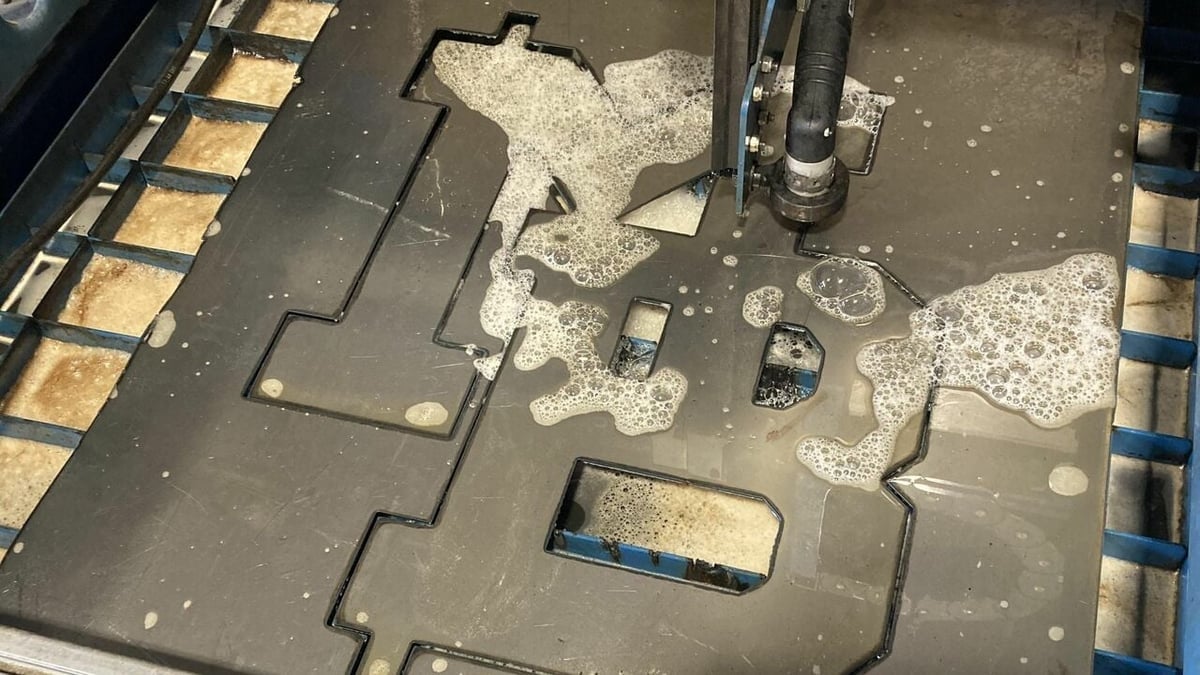
The heavy-duty cutting jobs that plasma cutters are capable of, while also being relatively low-cost and simple to operate, make them a valuable tool in a number of industries. Plasma cutting is a good fit to prepare metal plates that will later be welded or otherwise cleaned up at another stage. Think workshop fabrication rather than detailed designs.
Let’s check out some examples that you may run into:
- Metal frames: Plasma cutting is ideal for cutting brackets and connecting pieces for frames and metal structures. If you’re thinking of building your own heavy-duty 3D printer or CNC router, the plasma cutter will be a great tool to help you along the way.
- Signage: Plasma-cut signs can be a business in and of itself. There’s the usual deburring required, but once the sign is painted, it looks great. Just take a peek at Etsy where there’s an abundance of custom plasma cut signs.
- Construction: Large metal plating for buildings or bridges is often cut using a plasma cutter. Industrial machines can even be used to cut structural steel.
- Industrial machinery: Some excavators and other large industrial machines use plasma-cut parts in their construction.
License: The text of "CNC Plasma Cutting: The Basics Simply Explained" by All3DP is licensed under a Creative Commons Attribution 4.0 International License.

